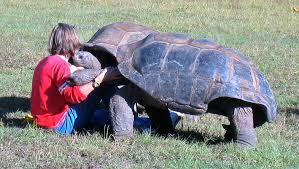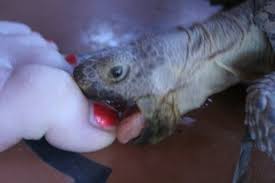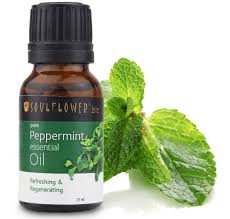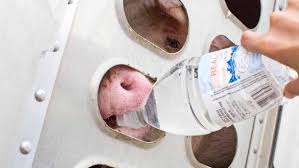Pig Trial Concludes With Partial Victory
Anita Krajnc, Toronto Pig Save
 Animal Advocate Anita Krajnc faced a prison sentence for feeding water to a dehydrated pig. After two years of defending herself in a court battle, the judge dismissed the charges against her for mischief and meddling with private property.
Animal Advocate Anita Krajnc faced a prison sentence for feeding water to a dehydrated pig. After two years of defending herself in a court battle, the judge dismissed the charges against her for mischief and meddling with private property.
Anita Krajnc is co-founder of Toronto Pig Save. Since 2011, every Thursday morning between 8:00-10:00am, they would hold weekly vigils outside of slaughterhouses. During this vigil they would hold up placards and hand out leaflets. However, when a transport truck would arrive, they would move to the traffic island and bear witness.
One day in June of 2015 during one of these vigils, it was extremely hot. When Anita looked inside the transport truck, she saw pigs panting with their mouths open. Some of the pigs even had foam around their mouths and she decided to give them water. This wasn't new, as Anita states that they had been giving water to pigs for a year or two prior to that.
While the pigs looked very desperate, they were also very friendly and came right up to Anita to take the water. However, this particular truck driver said to stop what she was doing. Anita's reply was to quote the Bible stating, "When Jesus said I was thirsty, you gave me water." The truck driver then told her that the pigs were not human and that he would call the police on her. Anita told him to call Jesus and said that if the pigs were thirsty, they would get water. The man then drove off.
 Anita didn't hear anything further until about six weeks later when a police officer came to her home and issued her a summons stating she was charged with criminal mischief and interference with property, the property being the pigs. She faced a potential six-month prison sentence and a $5,000 fine. View a video of the incident that led to the charges.
Anita didn't hear anything further until about six weeks later when a police officer came to her home and issued her a summons stating she was charged with criminal mischief and interference with property, the property being the pigs. She faced a potential six-month prison sentence and a $5,000 fine. View a video of the incident that led to the charges.
The court battle lasted almost two years. Luckily Anita had two vegan lawyers, Gary Grill and James Silver, represent her pro bono. She states they were both wonderful and really believed in the case. She tells us that they called expert witnesses to talk about the health and environmental consequence of animal agriculture. They also brought forward Dr. Lori Marino, a cognitive behaviorist, to talk about the sentient personality and intelligence of pigs. Dr. Marino started that under the definition of personhoods, pigs are persons and not property and that they are one of the few species that can recognize themselves in a mirror. They have self-awareness and have a sense of themselves within the social community. Each one is a unique individual.
 While the judge dismissed all charges, he still ruled in this case that pigs are property. Anita states that this was sort of a mixed result from the case and that we need to go further. The law needs to recognize pigs and all animals as persons, instead of giving them the degrading status of property. Because the judgment still stated that pigs are property, Anita wants to tackle that issue and the best way she knows how is to encourage everyone to bear witness and meet the pigs face-to-face.
While the judge dismissed all charges, he still ruled in this case that pigs are property. Anita states that this was sort of a mixed result from the case and that we need to go further. The law needs to recognize pigs and all animals as persons, instead of giving them the degrading status of property. Because the judgment still stated that pigs are property, Anita wants to tackle that issue and the best way she knows how is to encourage everyone to bear witness and meet the pigs face-to-face.
Anita explains that while it wasn't a complete victory, what the case did was to put out the images that her organization sees every week. They look into the transport trucks right in front of slaughterhouses at vigils and see the animals looking back at them into their eyes and pleading for help. A lot of them are fearful and terrified and some have resigned to their fate. Anita states that when they look in the trucks, they see individuals and not just numbers. Their vigils put a face on the nameless numbers. She explains that what was good about this case was the photos that were published in the mainstream press and the videos that were looped on mainstream television, finally showing the images that she sees. It was then clear to people that these pigs were suffering. Everyone seemed to sympathize with the idea of giving water to thirsty pigs and it raised for people the question of perhaps changing their own diets and following the Golden Rule.
Anita tells us she was a vegan and activist years before she co-founded Toronto Pig Save and only when she bore witness did it change everything for her. She states that if you experience firsthand such injustice against animals, it makes you fight for animals that much harder and it becomes a priority in your life.
 Toronto Pig Save started in 2011 and began a wider network known as The Save Movement in which groups from around the world join together to bear witness to animals arriving in transportation trucks at slaughterhouses. There are now almost 150 groups worldwide including North and South America, Europe, Oceania, and Asia. They promote the idea that everyone has a duty to bear witness, it doesn't matter if you're vegan, vegetarian or omnivore, we all have the duty not to look the other way when someone's suffering, but to come as close as you can and try to help, which is basically Leo Tolstoy's definition of bearing witness.
Toronto Pig Save started in 2011 and began a wider network known as The Save Movement in which groups from around the world join together to bear witness to animals arriving in transportation trucks at slaughterhouses. There are now almost 150 groups worldwide including North and South America, Europe, Oceania, and Asia. They promote the idea that everyone has a duty to bear witness, it doesn't matter if you're vegan, vegetarian or omnivore, we all have the duty not to look the other way when someone's suffering, but to come as close as you can and try to help, which is basically Leo Tolstoy's definition of bearing witness.
Visit Website
Join The Shellebration
Susan Tellem, American Tortoise Rescue
 The 17th Annual World Turtle Day is coming up. The Executive Director of the American Tortoise Rescue, Susan Tellem tells us why turtles and tortoises make great pets, except when they're having sex.
The 17th Annual World Turtle Day is coming up. The Executive Director of the American Tortoise Rescue, Susan Tellem tells us why turtles and tortoises make great pets, except when they're having sex.
Susan Tellem is the Executive Director of the American Tortoise Rescue in Malibu, California. She explains to us the difference between turtles and tortoises. While they are both reptiles, she says that turtle are generally water creatures and are carnivores, while tortoises are generally land and they are vegetarians.
The American Tortoise Rescue (ATR), a nonprofit organization established in 1990 for the protection of all species of tortoise and turtle, is celebrating its 17th annual World Turtle Day on May 23rd. The day was created by ATR to celebrate and protect turtles and tortoises and their disappearing habitats around the world. Now celebrated around the globe, turtle and tortoise lovers are taking "shellfies" and holding "shellebrations" in the US, Canada, Pakistan, Borneo, India, Australia, the UK and many other countries.
ATR launched World Turtle Day to increase respect and knowledge for the world's oldest creatures. These gentle animals have been around for 200 million years, yet they are rapidly disappearing as a result of smuggling, the exotic food industry, habitat destruction, global warming and the cruel pet trade. It is a very sad time for turtles and tortoises of the world.
 In captivity, Susan explains that they tend live longer in captivity than they do in the wild. This is because in the wild they have predators and other problems. The average water turtle can live anywhere from 25 to 50 years. The tortoise is known for longevity and can live 50 to 100 years or more. She also tells us that she has her tortoise in her will because of this.
In captivity, Susan explains that they tend live longer in captivity than they do in the wild. This is because in the wild they have predators and other problems. The average water turtle can live anywhere from 25 to 50 years. The tortoise is known for longevity and can live 50 to 100 years or more. She also tells us that she has her tortoise in her will because of this.
Some of the highlights you can do to make World Turtle Day special, include:
- Everyone can join the party at home, at a pub or at work! ATR created a World Turtle Day Party Pack that can be accessed for free
- Like the World Turtle Day page on Facebook and join 25,000 fans who are enjoying photo, baking and other contests and prizes in honor of World Turtle Day.
- Follow @WorldTurtleDay on Twitter where last year it trended when thousands of people tweeted to spread the good word about turtles.
 Biologists and other experts predict the disappearance of turtles and tortoises within the next 50 years. Adults and children can do a few small things that can help save turtles and tortoises for future generations.
Biologists and other experts predict the disappearance of turtles and tortoises within the next 50 years. Adults and children can do a few small things that can help save turtles and tortoises for future generations.
- Never remove turtles or tortoises from the wild unless they are sick or injured.
- If a tortoise is crossing a busy highway, pick it up and send it in the same direction it was going and if you try to make it go back, it will turn right around again.
- Write letters to legislators asking them to keep sensitive habitat preserved or closed to off road vehicles and to prevent off shore drilling that can lead to endangered sea turtle deaths.
- Never buy a turtle or tortoise from a pet shop as it increases demand from the wild.
- Report cruelty or illegal sales of turtles and tortoises to your local animal control shelter.
- Report the use of tiny turtles as prizes at carnivals and other events. It's illegal.
- Report the sale of any turtle or tortoise of any kind less than four inches. It is illegal to buy and sell them throughout the U.S.
 ATR's ultimate goal is to stop the illegal trade in turtles and tortoises around the world. The first priority here in the U.S. is to ask pet stores and reptile shows to stop the sale of hatchling tortoises and turtles without proper information for the buyer.
ATR's ultimate goal is to stop the illegal trade in turtles and tortoises around the world. The first priority here in the U.S. is to ask pet stores and reptile shows to stop the sale of hatchling tortoises and turtles without proper information for the buyer.
For example, many people buy sulcata tortoises as an impulse buy because they are so adorable when they are tiny. The breeders and pet stores frequently do not tell the buyers that a sulcata tortoise:
- Can grow to 200 pounds
- Needs constant heat throughout the year since they do not hibernate.
- Can become a large and destructive size in a short period of time.
- Requires sunshine and warm weather throughout the year but are sold in all 50 states, many of which suffer freezing temperatures.
 - Do not hibernate, which means an owner must provide a large outdoor house with heat throughout cold winter months.
- Do not hibernate, which means an owner must provide a large outdoor house with heat throughout cold winter months.
- Are strong and aggressive and can easily move furniture and damage house or apartment.
- Eat all the grass and plants and dig massive holes outside much to a homeowner's dismay.
- Rescues typically receive many distressed calls from owners who want to get rid of their sulcatas, most often when it reaches 50 pounds or 10 years of age.
- Many owners assume that when the tortoise becomes a problem, zoos will take them. Zoos are not interested in cast-off pets.
- Males will fight
- Owners mistakenly think that they can sell the huge animal for a large profit. "There is no market for adult sulcatas," "The only option remaining for some cruel owners is to dump the sulcata in the wild where it will die a slow death by freezing or being attacked by predators."
While the ATR sanctuary is full and no longer re-homes animals, there are rescues in every state where people who would like to adopt a sulcata can do so. Susan explains that they make great pets because they don't make a lot of noise (except when they're having sex). They don't throw up like cats do. They don't try to kill you by walking in front of you down the stairs. They don't have to go outside in the rain to be walked. They have very distinct personalities and are easy to care for. Plus, millions of years ago they outlived the dinosaur, so it is pretty incredible to have an animal like that. Just one thing, don't go barefoot around them if you have painted toenails, or they might mistake your toe for a flower and take a bite!
 ATR also educates people and schools about the real risk of contracting salmonella from water turtles. You should wash your hands thoroughly every time you touch a turtle or its water and do not bring turtles into schools or homes where children are under the age of 12.
ATR also educates people and schools about the real risk of contracting salmonella from water turtles. You should wash your hands thoroughly every time you touch a turtle or its water and do not bring turtles into schools or homes where children are under the age of 12.
American Tortoise Rescue is a nonprofit founded in 1990 for the protection of all species of turtles and tortoises. They have rescued more than 4,000 since inception. Foundlings that cannot be adopted because of ill health remain in the care of ATR for the remainder of their lives. Susan explains that they currently have over 100 permanent residents and they recently took in 70 hatchling turtles from a confiscation. ATR also acts as a clearinghouse for information about turtle care. They work to abolish "live market" slaughter of turtles in the US, the sale of reptiles on sites like Craig's List and the cruel importation and exploitation of a variety of species.
Celebrate World Turtle Day every year on May 23rd!
Visit Website
Second Hand Smoke Sickens Pets - Dr. Debbie
 Looking to save money on veterinary care or wondering how to keep your pet in peak health? If you are a smoker and have pets, there are some very compelling reasons to quit - second hand smoking's link to causing cancer and illness in pets. If threats from your spouse haven't gotten you to stop smoking yet, maybe looking at that furry friend on the couch next to you will. The life you save may be his.
Looking to save money on veterinary care or wondering how to keep your pet in peak health? If you are a smoker and have pets, there are some very compelling reasons to quit - second hand smoking's link to causing cancer and illness in pets. If threats from your spouse haven't gotten you to stop smoking yet, maybe looking at that furry friend on the couch next to you will. The life you save may be his.
It's long been known that smoking causes serious health repercussions in people, even to non-smokers in the same environment. According to the Center For Disease Control (CDC), secondhand smoke contains 7,000 different toxins, hundreds which are toxic and 70 which cancer-causing.
In people, secondhand smoke is linked to cardiovascular disease, lung cancer and childhood asthma, ear infections and Sudden Infant Death Syndrome (SIDS). Similar research in pets has found that animals from smoking homes are at greater risk of chronic lung disease like asthma and bronchitis, respiratory cancers and other cancers.
Pets are exposed to smoke and chemicals not only through inhaling air, but also by ingesting the toxins directly. Smoke particulates settle on pet's fur or are transferred from the owner's hands through petting. Pets then ingest cigarette's toxins through licking humans, self-grooming and grooming other household pets. Cat's especially fastidious nature permits increased intake of smoke residues through kitty grooming behaviors.
What Are Secondhand Smoke Effects In Pets?
Research from Tufts University discovered that cats exposed to smoking had a higher risk of developing the malignant cancer, lymphoma. In fact, cats living in smoking homes had double the risk of developing lymphoma as cats from non-smoking homes. When two people in the home smoked, the risk of lymphoma in cats increased to four times.
 Other veterinary research identified increased rates of oral, nasal and lung cancer in pets from smoking households. Cats from a smoker's home are four times as likely to develop the disfiguring cancer, squamous cell carcinoma. And in yet another study, long snouted dog breeds from smoking homes were at greater risk of developing nasal cancer, likely due to greater absorption area in long nasal passages.
Other veterinary research identified increased rates of oral, nasal and lung cancer in pets from smoking households. Cats from a smoker's home are four times as likely to develop the disfiguring cancer, squamous cell carcinoma. And in yet another study, long snouted dog breeds from smoking homes were at greater risk of developing nasal cancer, likely due to greater absorption area in long nasal passages.
How Can You Safeguard Your Pet's Health?
If you are a smoker, consider stopping - for your sake and your pets. Short of giving up the habit, take steps to minimize second hand smoke on your pets. Only smoke outdoors, away from pets. Wash your hands after smoking, before handling your pets. If you enjoy lighting up in the car when driving, leave your pet at home. Even with car windows down, cigarette smoke inside a car creates a toxic environment for pets.
Have your dog and cat examined by your veterinarian every six months. Alert your veterinarian to any lethargy, trouble breathing, and coughing or unexplained weight loss. Early detection and treatment permits the most effective treatment of chronic respiratory conditions and cancers. Your pet's veterinarian can detect illness through regular exams and preventative screenings.
While smoking isn't the only factor causing cancer in pets, it is increasingly scrutinized as a significant health risk, one that we humans can control. The health decisions we make not only influence our children's health, but also affect those devoted pets that warm our hearts and beds.
Featured veterinarian known as "Dr. Debbie" on national pet radio program, Animal Radio. Ebook author of "Yorkshire Terriers: How to Be Your Dog's Best Friend"; "Pugs: How to Be Your Dog's Best Friend"; "Mini Schnauzers: How to Be Your Dog's Best Friend"; and "Shih Tzu: How to Be Your Dog's Best Friend."
Visit Website
5 Must Know Things About Turtles
Robert Semrow, Listomania
 One of my favorite pet holidays, and I mean this, is World Turtle Day. That's right, celebrating turtles is something I enjoy. Why, simple, I have swum in the ocean with turtles and they are majestic prehistoric beings. Most of you know I have two desert Tortoises in my family and I while I love them, I must admit there is something very cool about turtles and it's special being able to interact and observe turtles in and out of the water. So, in honor of turtles everywhere, I present 5 Must know things about Turtles.
One of my favorite pet holidays, and I mean this, is World Turtle Day. That's right, celebrating turtles is something I enjoy. Why, simple, I have swum in the ocean with turtles and they are majestic prehistoric beings. Most of you know I have two desert Tortoises in my family and I while I love them, I must admit there is something very cool about turtles and it's special being able to interact and observe turtles in and out of the water. So, in honor of turtles everywhere, I present 5 Must know things about Turtles.
To begin with, they've been around for a really long time and are tremendous world travelers. Turtles have been around for more than 200 million years. That's right 200 million years and they live on every continent except Antarctica. Following the ocean currents, they travel the seas in some cases, like Leatherback turtles, up to 10,000 miles yearly.
Next, they've seen a lot. You may not expect it, but turtles have great eyesight. They respond to colors, including red, yellow and orange as those often signify food sources to them. It surprises many to know that turtles will often respond to the sights and sounds of their owners as well. So go ahead and bond with your turtles.
 It's interesting to note that the turtle's shell is made up of nearly 60 bones and is often light in comparison to tortoises. This also helps them swim and puts less pressure on them as they hold their breath under water for long periods. Some turtles can hold their breath up to 5 hours. Additionally, unlike the cartoons, because they are connected to them, turtles cannot leave their shells behind.
It's interesting to note that the turtle's shell is made up of nearly 60 bones and is often light in comparison to tortoises. This also helps them swim and puts less pressure on them as they hold their breath under water for long periods. Some turtles can hold their breath up to 5 hours. Additionally, unlike the cartoons, because they are connected to them, turtles cannot leave their shells behind.
Turtles can live up to 100 years! Some box turtles have lived well past their owners, so keep that in mind if you're thinking of adopting one. If you are swimming with one in the ocean, those are likely to live up to 40 years.
You will also need to make sure you have the necessary equipment to keep your turtle happy and healthy, such as an appropriate sized tank and turtle tank heater.
 Finally, turtles are omnivores. That's right, they eat a mix of plants, vegetables and prey. From small fish to crickets and mealworms, turtles enjoy a mix of prey and plants. Some pet turtles may enjoy bell peppers and squash to name a few veggies that turtles can enjoy.
Finally, turtles are omnivores. That's right, they eat a mix of plants, vegetables and prey. From small fish to crickets and mealworms, turtles enjoy a mix of prey and plants. Some pet turtles may enjoy bell peppers and squash to name a few veggies that turtles can enjoy.
If you are fortunate to have a pet turtle in your family, keep in mind it needs regular veterinary care as well and that you need to make sure that your vet has the knowledge to care for your turtle. Not every vet is trained to care for turtles, so make sure you know where you can go for care of your amazing creature.
Share your turtle tips on our Animal Radio Facebook Page.
Visit Website
The Dogfather's Grooming Tip with Joey Villani
Tick Talk - Easy Way To Remove Ticks
 Dogfather Joey Villani shares a little known secret for easily getting rid of ticks. Simply pulling them out of your animals, or using a match to get rid of them can actually cause more problems. But with this technique, the ticks will leave on their own accord. In fact, this is one of those tips that gets him excited and he actually tried this really cool trick see if it would work, and it worked like a charm.
Dogfather Joey Villani shares a little known secret for easily getting rid of ticks. Simply pulling them out of your animals, or using a match to get rid of them can actually cause more problems. But with this technique, the ticks will leave on their own accord. In fact, this is one of those tips that gets him excited and he actually tried this really cool trick see if it would work, and it worked like a charm.
Everyone hates ticks. There is no one that likes them. We hate getting them and hate having to remove them even more.
Joey explains that the trick is 100-percent peppermint essential oil. If you find a tick on your dog or cat and the head of the tick is embedded into their skin, place a couple of drop of peppermint oil directly on the tick itself, covering its body. Ticks hate the oil and will pull right out of the skin on their own within 30 seconds.
 The head of a tick has barbs on it to keep them in the skin. When we pull out a tick, a lot of the time we leave the barbs. These barbs can then cause an infection.
The head of a tick has barbs on it to keep them in the skin. When we pull out a tick, a lot of the time we leave the barbs. These barbs can then cause an infection.
After the tick has removed itself, you dispose of the tick. You will then need to clean the peppermint oil of off your pet's skin. If you don't, it can cause irritation. You can remove the oil by using a small cloth with a little bit of shampoo on it and gently clean and dry the area.
However, don't use this oil around a pet's eyes or muzzle. The last thing you want to do is to get it in your pet's eyes or mouth, because it is very strong.
Animal Radio News - Lori Brooks
 Class Action Claims Prescription Pet Food is Marketing Scheme
Class Action Claims Prescription Pet Food is Marketing Scheme
Four law firms are making news for representing pet owners in a class action lawsuit, which alleges that prescription dog and cat food is a marketing scheme devised by pet food companies to pump up their profits. They say, "At the heart of it, the world's largest pet food manufacturers are requiring that certain pet foods be sold by prescription even though there is no legal requirement for that prescription." They also state that requiring a prescription from a veterinarian misleads consumers, providing cover that enables pet food companies to charge excessive prices because prescription pet food contains no drug or other ingredient not also common in non-prescription pet food. The suit has been filed in Federal Court in California against the companies that make Hill's Prescription Diet, Purina Pro Plan Veterinary Diets, Royal Canin Veterinary Diet and Iams Veterinary Formula. Also named as defendants are PetSmart, Banfield Pet Hospital and BluePearl Vet. Prescription pet food accounts for about 5-percent of the $24 billion in pet food sold in the U.S. each year, according to the lawsuit, or more than $1 billion a year.
 Judge Admits Pigs Deserve Compassion But Are Still Property
Judge Admits Pigs Deserve Compassion But Are Still Property
A Canadian animal activist who gave water to pigs outside a slaughterhouse, an act that started a two-year legal battle and attracted attention from around the world, has finally come to an end. The woman was originally charged with committing mischief and faced the possibility of 6 months in jail. Now, a judge has dismissed the case against Anita Krajnc, the founder of Toronto Pig Save, who faced hefty fines and up to six months in jail for simply pouring water into the mouths of panting pigs. They were in a truck, which had stopped for traffic outside the slaughterhouse, where Anita was protesting that day. It was a contentious trial to say the least. Still, the judge dismissed the case and the courtroom burst into cheers. Anita says though it's over she is still disappointed the judge did not recognize pigs and other animals as anything but property.
 Cost of Pet Ownership for First 12 Months
Cost of Pet Ownership for First 12 Months
Nationwide Home Insurance recently surveyed 2,300 pet owners and asked how much they had spent in the first 12 months of owning their pets. The answers took into account food, bedding, toys, equipment and pet insurance:
Average: $4,530
Dogs: $6201
Cats: $3,177
Fish: $995
Rabbits: $2332
Horses cost the most, the study by Nationwide Home Insurance found, forcing owners to shell out a staggering $16,378. One of the highlights of the study: one in eight of the pet owners surveyed, or 12-percent, confessed that they love their pet more than their partner.
 Pet Owner Still Searching for Pets 3 Years Later
Pet Owner Still Searching for Pets 3 Years Later
Amanda Denes knows all about, love and loss and carrying on with the greatest amount of hope. Her two dogs, Burton and Zuzu, the sibling results of a love affair between her friend's bulldog and a determined neighbor's schnauzer, disappeared three years ago after a break-in at Amanda's apartment in Hartford, Connecticut. She came home one night in February 2014 to find signs of a burglary in nearly every room of her home. What she couldn't find, however, were her dogs. Three years later, she is still actively searching for her dogs, her babies, who are both from the same litter. Today, her Facebook page soliciting information about the two dogs has upward of 12,000 likes and still rakes in hopeful posts from sympathizers. In the first 6 months after they disappeared, she put posters on nearly every telephone pole in town. Then she sent postcards with their pictures to every animal shelter on the east coast. She still hasn't found Burton and Zuzu, but asks, "How could you not keep hope alive? Until you know for sure, you're always going to have that hope. They're always going to have a piece of you that will hold on to that." So, her hope lives on. Amanda admits that for the next decade or so, until the natural life span for Burton and Zuzu ends, she'll continue to search and hopefully find them.
 Some Pets Make You Look More Attractive
Some Pets Make You Look More Attractive
If you have ever felt like Cupid has put you in the doghouse when it comes to finding love, adopting a furry companion may help improve your luck. However, a new survey suggests not just any pet will do the job. There are lots of details to consider. Petsies surveyed 1,000 men and women on how attracted they were to the opposite sex when they were with cats and dogs of all different sizes and ages. Researchers showed study participants 12 pictures of the same people. Half of the group saw the person with a pet, while the other half saw him or her without a pet. Here's some of what they found: Women rated men holding puppies as almost 24-percent sexier, 14-percent more trustworthy and 13-percent more attractive than the same man not holding a puppy. Meanwhile, dogs that weren't too big or too small gave women the biggest sexiness boost, as men rated them about 7-percent sexier and more attractive than if they weren't holding a dog at all. But in terms of trustworthiness, small dogs gave women the biggest advantage. Men rated them nearly 9-percent more trustworthy than women in photos without a dog. Now, this is a bummer - owning a kitten or cat didn't do women in the survey any favors. Women with kittens were perceived as the least attractive and women with cats were rated lowest on sexiness and trustworthiness. For men, owning a large dog did men the fewest favors in terms of sexiness and attractiveness. And, being a medium-sized dog owner led to the lowest trustworthiness rating for men.
 Wedding Nannies
Wedding Nannies
Couples who want to include their pets in their wedding are spending hundreds of dollars to make them a part of their big day. It's a booming new business for one company called First Class Pet Wedding Assistants. Their wedding packages include walks, baths, grooming, dressing, coordinating with the professional wedding photographers for photos and taking the pets home to feed and settle them in for the night if the pets can't be at the reception or if the couple leaves right away for their honeymoon. Packages start at $300, but can go up to $1,000 depending on the services needed, the number of pets and whether pet sitting during the honeymoon is required.

NEWS UPDATE brought to you by Fear Free. "Take the 'pet' out of 'petrified'" and get pets back for veterinary visits by promoting considerate approach and gentle control techniques used in calming environments.
 Listen to the entire Podcast of this show (#911)
Listen to the entire Podcast of this show (#911)



 Animal Advocate Anita Krajnc faced a prison sentence for feeding water to a dehydrated pig. After two years of defending herself in a court battle, the judge dismissed the charges against her for mischief and meddling with private property.
Animal Advocate Anita Krajnc faced a prison sentence for feeding water to a dehydrated pig. After two years of defending herself in a court battle, the judge dismissed the charges against her for mischief and meddling with private property.  While the judge dismissed all charges, he still ruled in this case that pigs are property. Anita states that this was sort of a mixed result from the case and that we need to go further. The law needs to recognize pigs and all animals as persons, instead of giving them the degrading status of property. Because the judgment still stated that pigs are property, Anita wants to tackle that issue and the best way she knows how is to encourage everyone to bear witness and meet the pigs face-to-face.
While the judge dismissed all charges, he still ruled in this case that pigs are property. Anita states that this was sort of a mixed result from the case and that we need to go further. The law needs to recognize pigs and all animals as persons, instead of giving them the degrading status of property. Because the judgment still stated that pigs are property, Anita wants to tackle that issue and the best way she knows how is to encourage everyone to bear witness and meet the pigs face-to-face. The 17th Annual World Turtle Day is coming up. The Executive Director of the American Tortoise Rescue, Susan Tellem tells us why turtles and tortoises make great pets, except when they're having sex.
The 17th Annual World Turtle Day is coming up. The Executive Director of the American Tortoise Rescue, Susan Tellem tells us why turtles and tortoises make great pets, except when they're having sex. In captivity, Susan explains that they tend live longer in captivity than they do in the wild. This is because in the wild they have predators and other problems. The average water turtle can live anywhere from 25 to 50 years. The tortoise is known for longevity and can live 50 to 100 years or more. She also tells us that she has her tortoise in her will because of this.
In captivity, Susan explains that they tend live longer in captivity than they do in the wild. This is because in the wild they have predators and other problems. The average water turtle can live anywhere from 25 to 50 years. The tortoise is known for longevity and can live 50 to 100 years or more. She also tells us that she has her tortoise in her will because of this. Biologists and other experts predict the disappearance of turtles and tortoises within the next 50 years. Adults and children can do a few small things that can help save turtles and tortoises for future generations.
Biologists and other experts predict the disappearance of turtles and tortoises within the next 50 years. Adults and children can do a few small things that can help save turtles and tortoises for future generations. - Do not hibernate, which means an owner must provide a large outdoor house with heat throughout cold winter months.
- Do not hibernate, which means an owner must provide a large outdoor house with heat throughout cold winter months.
 ATR also educates people and schools about the real risk of contracting salmonella from water turtles. You should wash your hands thoroughly every time you touch a turtle or its water and do not bring turtles into schools or homes where children are under the age of 12.
ATR also educates people and schools about the real risk of contracting salmonella from water turtles. You should wash your hands thoroughly every time you touch a turtle or its water and do not bring turtles into schools or homes where children are under the age of 12. Looking to save money on veterinary care or wondering how to keep your pet in peak health? If you are a smoker and have pets, there are some very compelling reasons to quit - second hand smoking's link to causing cancer and illness in pets. If threats from your spouse haven't gotten you to stop smoking yet, maybe looking at that furry friend on the couch next to you will. The life you save may be his.
Looking to save money on veterinary care or wondering how to keep your pet in peak health? If you are a smoker and have pets, there are some very compelling reasons to quit - second hand smoking's link to causing cancer and illness in pets. If threats from your spouse haven't gotten you to stop smoking yet, maybe looking at that furry friend on the couch next to you will. The life you save may be his.  One of my favorite pet holidays, and I mean this, is World Turtle Day. That's right, celebrating turtles is something I enjoy. Why, simple, I have swum in the ocean with turtles and they are majestic prehistoric beings. Most of you know I have two desert Tortoises in my family and I while I love them, I must admit there is something very cool about turtles and it's special being able to interact and observe turtles in and out of the water. So, in honor of turtles everywhere, I present 5 Must know things about Turtles.
One of my favorite pet holidays, and I mean this, is World Turtle Day. That's right, celebrating turtles is something I enjoy. Why, simple, I have swum in the ocean with turtles and they are majestic prehistoric beings. Most of you know I have two desert Tortoises in my family and I while I love them, I must admit there is something very cool about turtles and it's special being able to interact and observe turtles in and out of the water. So, in honor of turtles everywhere, I present 5 Must know things about Turtles.
 It's interesting to note that the turtle's shell is made up of nearly 60 bones and is often light in comparison to tortoises. This also helps them swim and puts less pressure on them as they hold their breath under water for long periods. Some turtles can hold their breath up to 5 hours. Additionally, unlike the cartoons, because they are connected to them, turtles cannot leave their shells behind.
It's interesting to note that the turtle's shell is made up of nearly 60 bones and is often light in comparison to tortoises. This also helps them swim and puts less pressure on them as they hold their breath under water for long periods. Some turtles can hold their breath up to 5 hours. Additionally, unlike the cartoons, because they are connected to them, turtles cannot leave their shells behind.
 Dogfather Joey Villani shares a little known secret for easily getting rid of ticks. Simply pulling them out of your animals, or using a match to get rid of them can actually cause more problems. But with this technique, the ticks will leave on their own accord. In fact, this is one of those tips that gets him excited and he actually tried this really cool trick see if it would work, and it worked like a charm.
Dogfather Joey Villani shares a little known secret for easily getting rid of ticks. Simply pulling them out of your animals, or using a match to get rid of them can actually cause more problems. But with this technique, the ticks will leave on their own accord. In fact, this is one of those tips that gets him excited and he actually tried this really cool trick see if it would work, and it worked like a charm.  The head of a tick has barbs on it to keep them in the skin. When we pull out a tick, a lot of the time we leave the barbs. These barbs can then cause an infection.
The head of a tick has barbs on it to keep them in the skin. When we pull out a tick, a lot of the time we leave the barbs. These barbs can then cause an infection. Class Action Claims Prescription Pet Food is Marketing Scheme
Class Action Claims Prescription Pet Food is Marketing Scheme
 Cost of Pet Ownership for First 12 Months
Cost of Pet Ownership for First 12 Months
 Pet Owner Still Searching for Pets 3 Years Later
Pet Owner Still Searching for Pets 3 Years Later
 Some Pets Make You Look More Attractive
Some Pets Make You Look More Attractive
 Wedding Nannies
Wedding Nannies
